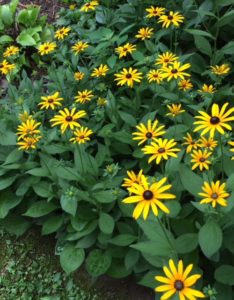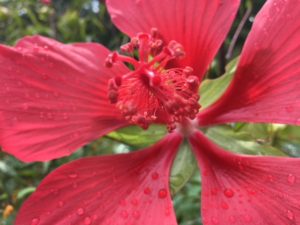
I have a friend who is a fellow plant enthusiast. When we’re out walking the fields and woods together, we don’t cover much territory. Our noses to the ground, we stop frequently to point out and discuss the plants along our route. Our enthusiasm is endless and finding a new species (for us) is like finding the pot of gold at the end of the rainbow. Our arguments are equally intense. (“That’s Elephantopus tomentosus,” “How can you say that? It has to be Elephantopus cariolinianus! Look how smooth the leaves are”) and so forth. We are both right about half the time – and wrong the other half and the arguments are as much fun as the enthusiasms.
Unfortunately, my friend and I seem to be in the minority in our passion for identifying plants. An article in the Wall Street Journal last week declared in big letters that the U, S. is running short of botanists. I don’t know whether to feel like I’m a dinosaur or “in demand.”
The need for botanists is as great – or greater – now than it’s ever been. The National Park Service and the Bureau of Land Management are having difficulty filling positions as older botanists retire. A scientist at the Chicago Botanic Garden estimates that there is one botanist on the federal payroll for every 20 million acres of land.
The dearth of qualified botanists is, in part, due to the epidemic of “plant blindness” in the United States, the “growing inability by Americans – and even well-degreed biologists – to tell the difference among even basic plants,” according to this article.
Fortunately, there are measures being taken to “cure” this blindness. Bills were introduced in the Senate and in the U.S. House during the last year to promote botany education. But this is something that we can all do something about. Right now (after you finish reading this blog). I like to think that you, my dear readers, are all plant identification experts. If, perhaps, the plant world is still a little fuzzy around the edges, do something about it before you go totally blind.

What to do? go outside and look, really look at the plants around you. Notice the differences and the similarities among plants. You probably know more than you think you do. I bet even YOU can tell an oak tree from a pine, an azalea from a hydrangea! Test yourself, see how much you know. All it takes is for you to open your eyes and be aware of the magnificent beauty and splendor of the plant world that surrounds us.

The most important thing is for our children and grandchildren to look at the world around them and to begin to know the plants. Fortunately, plants are everywhere! Get kids off their phones and away from their computers. Make sure that they go outside. Make sure they touch and feel and smell nature. Maybe then, a virtual world on a screen will seem flat and boring in comparison.
My goal? 20/20 plant vision for everyone I know – and beyond! After all, William Blake promised us that we could “see heaven in a wild flower.” All we have to do is look.

You are spot on! If you want to be a guest botanist in one (or more) of my classes, please let me know!
The dreaded computer may be our friend as well as our enemy here. Is some botanical society or governmental agency compiling a comprehensive database of plants while we still have botanists who can identify them? The cloud is big enough to hold this, including pictures. If not, someone should start that project. Then, when a significant number of people again the value of this information, we will have the seed corn to re-grow this knowledge.
People interested in contributing to the botanical science of our planet might like to participate in Nature’s Notebook, a program sponsored by the USA National Phenology Network (https://www.usanpn.org/home). NATURE’S NOTEBOOK is a national, online program where amateur and professional naturalists regularly record observations of plants and animals to generate long-term data sets used for scientific discovery and decision-making.